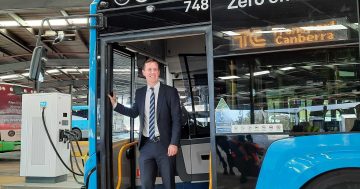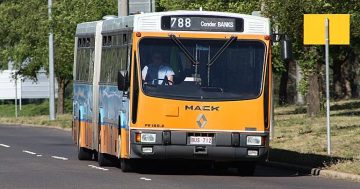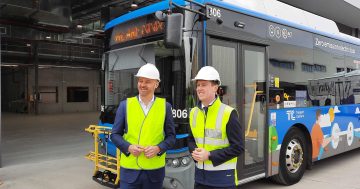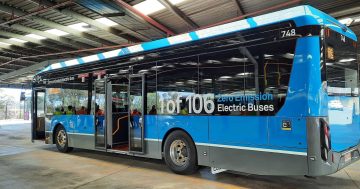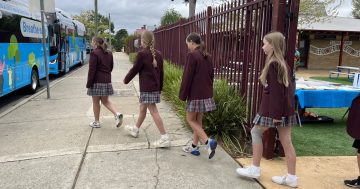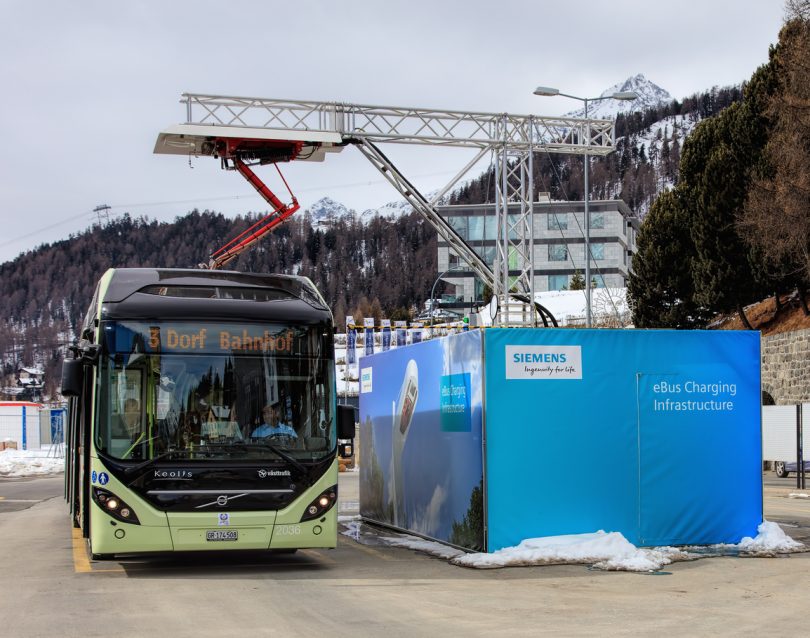
Pictured is a Volvo 7900 Electric Hybrid bus at a quick-charge facility in St. Moritz, Switzerland. A Volvo hybrid bus will be part of the trial in Canberra which will be rolled out by the end of the year.
Electric buses will hit Canberra streets by the end of the year as the ACT Government rolls out a $900,000 trial of the environmentally-friendly vehicles.
Contracts have been signed with two internationally-renowned providers to supply the buses which include two fully electric buses from Carbridge and a hybrid bus supplied by Volvo.
The trial is the first of its kind in Canberra and will run until the end of 2019. According to ACT Transport and City Services Minister, Meegan Fitzharris, the trial will guide future government decisions about replacing diesel buses with those run by alternate fuels.
Ms Fitzharris said the three new buses will service the entire Transport Canberra bus network alongside the diesel powered fleet.
“The trial clearly demonstrates this Government’s resolve to invest in our bus system as one part of an integrated transport network, to get people where they need to be safely and on time,” Ms Fitzharris said.
“Recent improvements in battery technology mean that electric buses are becoming more economical and operationally viable, coupled with obvious environmental benefits.
“If electric or electric-hybrid buses are found suitable following the trial, Transport Canberra will consider alternative fuel buses as part of the broader fleet replacement options.
“The electric bus trial is a modern, environmentally beneficial initiative and we welcome this progressive feature of our integrated public transport network.”
Do you think electric buses are a good idea? Let us know in the comments below.













